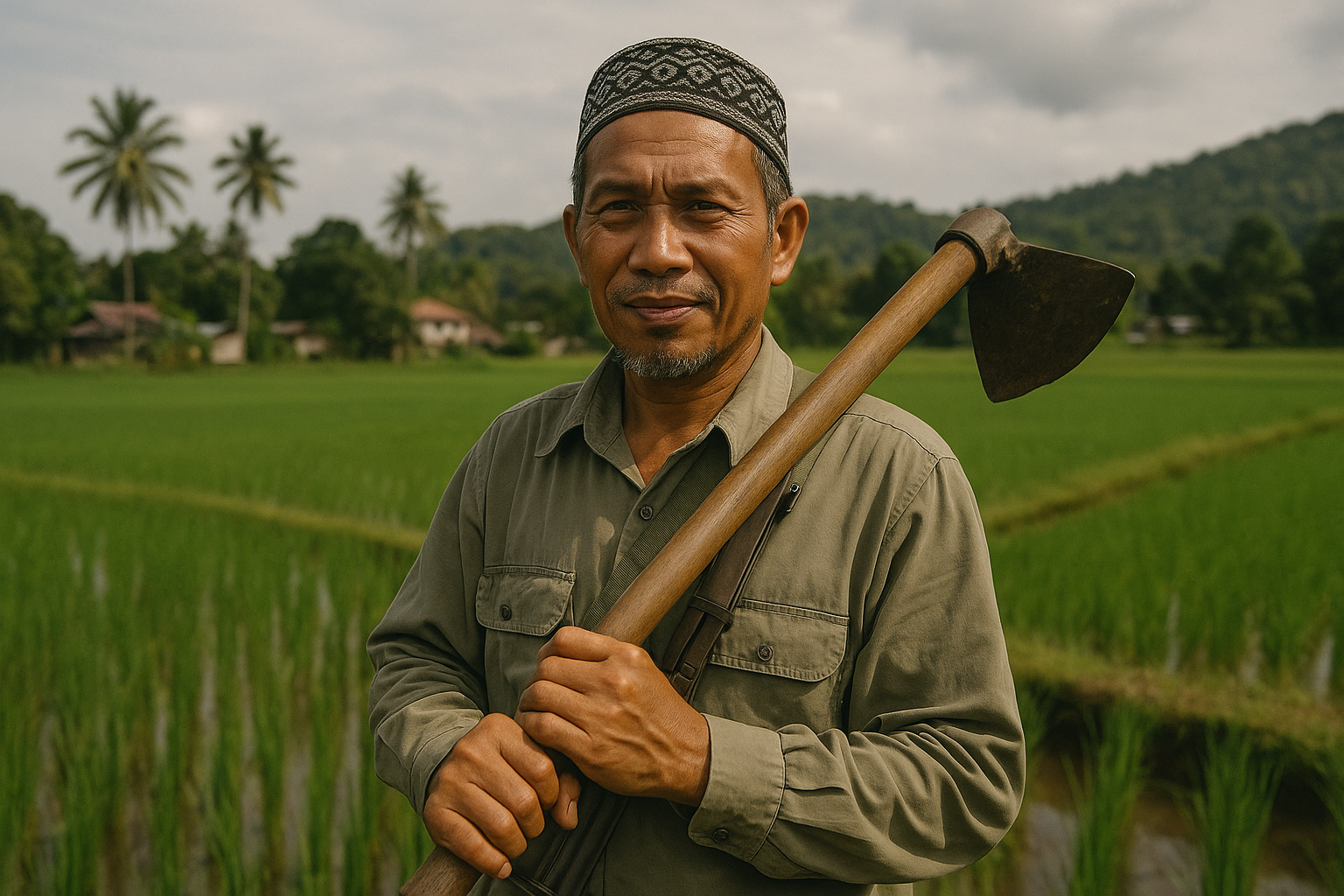Is the Bangsamoro Region Safe to travel in 2025?
If you have never been to Mindanao, especially the Bangsamoro Region, you’ve probably held the impression that it’s not safe to visit here. For decades, the national media has mentioned us when it’s about bombings, kidnappings, and war as if they were the only things happening here.
But BARMM is not as unsafe as you think.
I won’t say that all those media reports were not true because that would be an overstatement. It’s just that the violence the media show outnumbered and outshone the reasons why you should visit BARMM.
We top bar and board exams, we bring home international awards, and we also contribute to the growth of the country. Apart from the big things, even our everyday life is vibrant because of our rich and diverse culture.
Because we are composed of thirteen ethnolinguistic tribes, which means I could be sitting next to someone who speaks an entirely different dialect.
Let us debunk the myth that the modern war between the Moro groups and the government that portrayed us so negatively: It was a war against oppression, not a conflict between religions, or at least, for us.
A Crash Course about the Contemporary War between the Moros and the Philippines
Contrary to how we were portrayed, the contemporary war was not a senseless rebellion but only a response and resistance to injustices.
What do we mean when we say we were oppressed?
Mindanao wasn’t a part of the Philippines. When Luzon and Visayas were under Spanish rule, Mindanao continued to flourish as a separate nation.
Not only was it separate, but it also flourished on its own. It has a good record in trading and was closely linked with other countries.
So the Spaniards couldn’t infiltrate it because it’s far from their military base. Even if they did, Mindanao is close to other Muslim countries like Brunei, Malaysia and Indonesia, and they could get help easily.
But.
When the Spaniards sold the Philippines to the Americans through the Treaty of Paris in 1898, they unfairly included Mindanao without the consent of its inhabitants. So when America granted Luzon independence, they perceived Mindanao as a place under their rule. And Moros felt helpless that they were now ruled by people colonized by the colonizers who couldn’t even set foot on their land.
But the modern Moro armed struggle was not really because of that. It was triggered by the atrocities the Moros suffered under the Marcos regime.
And it started before Martial Law.
Ten years before martial law, the colonizer-influenced government drove out the Moros from their land and let non-Moros settle therein.
Land Dispossession
We had our own effective political systems back then, rooted in customs and traditions. For years, this system has maintained order and peace, including land ownership.
In 1902, however, the Philippine government issued the Land Registration Act, requiring land owners to present their land titles as proof that they own it.To abide by the law, the Moros sought assistance on how they could acquire the newly-invented Land Title, but the government didn’t provide them with assistance.
The following year, the Philippines declared that all unregistered lands were now public lands and were to be disposed of by lease, purchase, or homestead through the Public Land Act of 1903. That means, the Philippines automatically owned the land of the Moros that they owned and cultivated even before the Philippines became the Philippines.
The Moros tried to buy at least a portion of their land because it was not only their source of livelihood, but it was also what connected them to their ancestors. But again, the Government dismissed them.
They instead sold the now-public lands to non-Moro individuals and corporations for a very low price.
And that’s how the land dispossession began.
Moro Massacres before Martial Law.
While this happened, several massacres occurred here and there. Here are a few of them:
- Jabidah Massacre. 28 young Moros were recruited for a mission they didn’t know. When they learned that they should be sent to Sabah, Malaysia, they refused because they didn’t want to kill their fellow Muslims. They tried to flee but were executed on Corregidor Island in 1968.
- Manili Massacre. 70-100 Moros were invited inside a mosque in Carmen, North Cotabato, for a peace conversation. When the Ilaga entered, however, they were gunned down while praying, including women and children.
- Alamada Massacre. In 1971, around 40 farmers and villagers were executed by Ilaga. Their houses were burned and women were raped and most of them were hacked to death.
These are only a few of the bloodshed that happened before the Martial Law.
The Moros didn’t resort to violence first.
For a decade, Moro Sultans, Datus, and Ulamas had tried all friendly means to communicate with the government to stop the land-grabbing and the killings through letters, manifestos, and petitions, seeking peaceful redress.
In these letters, they refer to Christians as their “friends” or “brothers” or “sisters”.
“We have nothing against the Christians who are our neighbours and friends. We have coexisted with them peacefully long before the advent of colonization. Our struggle is against the government that has failed us.”
In a letter from a Muslim elder in Lanao, it said, “We ask our Christian brothers and sisters who live among us to not let the actions of the few destroy the peace of the many.”
So no, we don’t hate Christians. And no, you won’t be in danger just because you wear a cross on your neck.
The point here is, in contrast to how the media portrayed the Moros, the contemporary armed struggle was not senseless violence. It was only a resistance to injustice and oppression.
The Philippine government – MILF war officially ended in 2014
Thank God, the Philippines and the MILF signed a Comprehensive Agreement known as the Comprehensive Agreement on Bangsamoro.
One of its key parts is granting the Bangsamoro autonomy, known as the BARMM. It has been a decade, and the national government and the BARMM Government have continued their initiatives to maintain peace.
Not convinced yet?
One part of the Comprehensive Agreement on Bangsamoro, the final peace agreement between the Philippines and the MILF, is the decommissioning.
That means, the Moro freedom fighters, or ‘rebel groups’ as the media like to call them, exchange their firearms for cash assistance, health, and livelihood support to start a new normal life.
That means many units were disbanded.
Out of the 40,000 target number, 26,145 combatants were already decommissioned as of 2024.

Actual dangers to look out for and why they shouldn’t stop you from visiting BARMM.
Like what you see in the news, and this I won’t deny, shootings happen here. But they are localized. That means, they are not national or inter-regional. Sometimes they only happen in a small corner of a Barangay (i.e., village).
1. Rido. Some Moro communities value family honor and resort to violence to protect it. This exchange of revenge can pass from generation to generation
Why it shouldn’t alarm you: These are targeted and do not involve random civilians or tourists, although there have been reports of civilians getting caught in crossfires before, these only happen in remote areas. Plus, many rido conflicts are settled now by PSRO and LGUs.
Related: On Rido: The Unspoken Truth about Why Moros Kill Each Other
2. Presence of rebel groups. Some Moro groups rejected the peace agreement with the Philippine government. Until today, there are still encounters between them and the government.
Here’s why it shouldn’t stop you: These skirmishes only happen in remote mountainous areas, and it’s so remote that even locals don’t go there. Plus, they only target government troops or their armed rival groups. As of July, 921 BIFF members have already surrendered.
3. Politics-related conflicts. During campaign seasons, ambushes and shootings happen to political families.
Here’s why it shouldn’t stop you: Only politicians are involved, and this would usually subside after the election.
4. Other petty crimes. Like anywhere, cases like pickpocketing or purse snatching can still happen.
Here’s what you can do: Do the same precautions you would take in Manila, Cebu, or any place in the world. Secure your belongings, be vigilant and avoid flashy jewelry.
Is it safe to visit BARMM in 2025?
Short answer: Yes
Long answer: Yes, because BARMM is huge. It’s composed of two mainland provinces and two island provinces. Just because a shooting happens in one Barangay doesn’t mean the whole region is at war.
Moros help more than harm. I guess this is one of the reasons why we remain poor. We’d rather give our extra food to our neighbours than save it for later. We value respect, especially for elders and women and we treat guests like their lives depend on it. In Maranao communities, they’d let guests sleep in their bedroom to show they trust you and treat you like one of them.
As the region opened up for infrastructure, agriculture and halal industries, entrepreneurs and developers felt compelled to explore BARMM’s potential. Peace advocates, NGOs, journalists and Barmm stakeholders, nationals and foreigners alike, also visit BARMM now. Some to explore, while others, to witness history.
Disclaimer: The events and conflicts are only shared to give context about Mindanao and challenge long-standing myths and stereotypes about the Bangsamoro. This website supports the peace process and the gains of the peace agreement, and condemns terrorism in all its forms.
